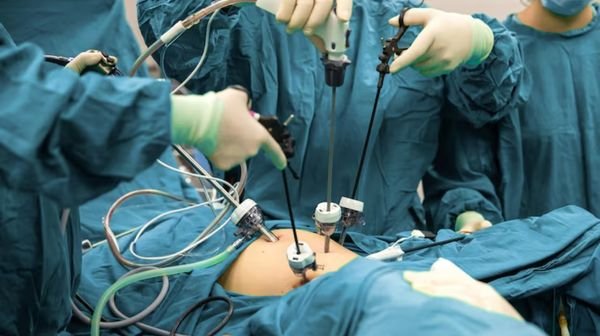 Book Appointment
Book Appointment

Living with a hernia can be uncomfortable, limiting your daily activities and causing persistent worry. If you're facing hernia surgery, you've likely heard about different surgical approaches. Today, more patients are choosing laparoscopic hernia repair over traditional open surgery, and the reasons are compelling.
Laparoscopic hernia repair, also known as minimally invasive hernia surgery, represents a significant advancement in surgical treatment. Instead of making one large incision, your surgeon performs the procedure through several small incisions, each less than half an inch long. Using a tiny camera called a laparoscope and specialized instruments, the surgeon repairs your hernia with precision and minimal tissue disruption.
Did You Know? This technique has evolved significantly since its introduction in the early 1990s. Today, after 30 years of development, laparoscopic inguinal hernia repair has become the main method for treating adult inguinal hernia, with proven effectiveness and safety.
The most significant advantage patients experience is reduced post-operative discomfort. Studies show that 5 years after operation, only 1.9% of patients who had undergone laparoscopic repair continued to report moderate or severe pain, compared with 3.5% of those who had undergone open repair.
Recovery benefits include:
Laparoscopic repair leaves minimal scarring. The small incisions heal to create barely visible marks, unlike the larger scar from traditional open surgery. This cosmetic advantage is particularly important for younger patients and those concerned about appearance.
Research consistently demonstrates fewer complications with laparoscopic repair:
When performed by experienced surgeons, laparoscopic hernia repair provides outstanding long-term results. Recurrence rates after TAPP repair usually range from 1% to 6%; specialized centers performing large numbers of repairs cite rates of less than 1%.
Laparoscopic hernia repair is particularly advantageous for:
When both sides need repair, the laparoscopic approach addresses both simultaneously through the same small incisions
Previous open surgery creates scar tissue that makes laparoscopic repair often easier and more effective
Athletes and physically demanding workers benefit from faster recovery
Minimal downtime means less time away from career responsibilities
Modern laparoscopic hernia repair incorporates cutting-edge technology:
For doctors, robotic surgery can provide a three-dimensional view of the surgical field, with high magnification of the surgical field, a clearer view of the anatomy and less tissue damage. This enhanced precision benefits patients through improved outcomes.
Today's surgical meshes are designed for optimal integration with your body's tissues, providing strong, long-lasting repair while minimizing complications.
Surgeons now use standardized approaches like TEP (Totally Extraperitoneal) and TAPP (Transabdominal Preperitoneal) techniques, both proven highly effective with predictable outcomes.
Your surgeon will conduct a thorough evaluation to ensure you're a good candidate. Most patients are suitable for laparoscopic repair, though certain conditions may require open surgery.
The evidence supporting laparoscopic hernia repair is overwhelming:
Choosing laparoscopic hernia repair means selecting a proven, modern approach that prioritizes your comfort, recovery, and long-term well-being. The combination of reduced pain, faster healing, excellent cosmetic results, and outstanding success rates makes it the preferred choice for most patients.
However, every patient is unique. Factors like your hernia type, medical history, and personal preferences all influence the best treatment approach. The key is working with an experienced surgeon who can guide you through your options and customize treatment to your specific needs.
Don't let a hernia limit your life any longer. Laparoscopic hernia repair offers you the opportunity to return to your normal activities quickly and confidently, with minimal disruption to your routine.
The advanced techniques, proven results, and patient satisfaction rates make laparoscopic repair an excellent choice for most hernia patients. With proper surgical expertise and your commitment to following recovery guidelines, you can expect excellent outcomes and a swift return to the activities you enjoy.
Leave a Reply
Your Email address will not be published